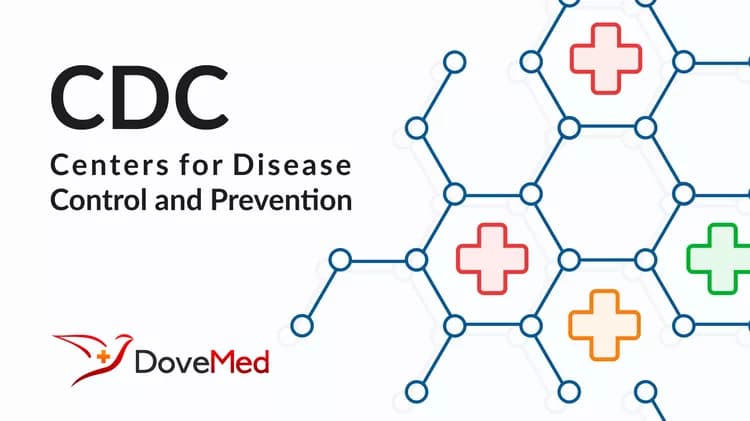
New Report Estimates More than 2 million Cases of Tobacco-related Cancers Diagnosed in the United States During 1999-2004
New Report Estimates More than 2 million Cases of Tobacco-related Cancers Diagnosed in the United States During 1999-2004
About 2.4 million cases of tobacco-related cancers were diagnosed in the United States from 1999 to 2004, with lung and bronchial cancer accounting for almost half of these diagnoses, according to a study by the Centers for Disease Control and Prevention (CDC). In the most comprehensive assessment to date, the study marks the first time CDC has reported on all tobacco-related cancers for more than 90 percent of the population.
"The data in this report provides additional, strong evidence of the serious harm related to tobacco," said Sherri Stewart, Ph.D., in CDC's Division of Cancer Prevention and Control, who is lead author of the study. "We've long known tobacco was associated with lung and laryngeal cancer, but this study gives us even greater clarity. The rates for these two cancers were highest in areas with the highest prevalence of tobacco use."
The Surgeon General has found tobacco use causes these cancers: lung and bronchial, laryngeal, oral cavity and pharyngeal, esophageal, stomach, pancreatic, kidney and renal pelvis, urinary bladder, cervical and acute myelogenous leukemia (AML).
For the report in this week's Morbidity and Mortality Weekly Reports Surveillance Summary, researchers' analyzed data from CDC's National Program of Cancer Registries and the National Cancer Institute's (NCI) Surveillance, Epidemiology and Results Program.
Though tobacco is a major cause for all the cancers presented in this report, not all cases of cancer studied could be linked directly to tobacco use. Some of these cancers have several important risk factors such as infections or genetic factors that can operate in concert with, or independently, of tobacco. In addition, information on tobacco use was not available in these databases. Therefore, some cases of cancer included in this report may not be attributable to tobacco use.
Key Findings:
Age-adjusted rates are presented in parentheses where appropriate and are per 100,000 persons.
The incidence of tobacco-related cancers was higher among black and non-Hispanic populations, and among men, which reflect patterns of tobacco use.
Lung, laryngeal, and cervical cancer incidence rates were highest in the South, where the highest prevalence of smoking exists. Kentucky had the highest rates of lung cancer among men and women (133.2 and 75.5, respectively), the third highest rate of laryngeal cancers among men (9.7) and the highest rate of laryngeal cancer among women (2.6). Kentucky had the highest prevalence of current smoking (28.6 percent).
States with the lowest smoking rates are in the West: Utah (10.4 percent), California (18.5 percent), and Montana (18.5 percent). Cancer incidence rates were consistently lowest in the West for all the cancers, with the exception of stomach cancer.
In 2004, lung and bronchial cancer incidence rates were highest among men in the South (97.9) and lowest in the West (66.0); Among women, rates were similar in the South, Midwest, and Northeast regions (55.3–56.4) and were lowest in the West (48.1)
In 2004, laryngeal cancer incidence rates were highest among men in the South (8.4) region of the United States and lowest in the West (4.8). Among women, rates were similar in the South, Midwest, and Northeast (1.6–1.7) and were lowest in the West (1.1).
The high incidence rates of both lung and laryngeal cancer in the South are consistent with smoking patterns and reflect the strong association of these cancers with tobacco use.
The report also noted other cancers associated with tobacco use (pancreas, urinary bladder, esophagus, kidney, stomach, cervix, and AML) accounted for more than 1 million cases diagnosed.
"Tobacco use is the leading preventable cause of disease and premature death in the United States and the most prominent cause of cancer," said Matthew McKenna, M.D., M.P.H., director, CDC's Office on Smoking and Health. "The tobacco-use epidemic causes a third of the cancers in America. If proven strategies were fully implemented to decrease tobacco use, much of the suffering and death that cancer inflicts on families and communities could be prevented."
Through its National Tobacco Control Program, the CDC recommends that states conduct evidence-based tobacco-control programs that are comprehensive, sustainable, and accountable and include use of counter-advertising mass media campaigns; community interventions that reduce tobacco advertising, promotions, and commercial availability of tobacco products; comprehensive school-based tobacco use prevention policies and programs; and higher prices for tobacco products through increases in unit prices and excise taxes.
For more information on the report, Surveillance for Cancers Associated with Tobacco Use — United States, 1999–2004, visit www.cdc.gov/mmwr. For information on CDC's efforts in cancer prevention and control visit www.cdc.gov/cancer, and to learn more about CDC's efforts in preventing tobacco use visit www.cdc.gov/tobacco. Free telephone-based counseling is also available from anywhere in the United States, at 1-800-QUIT-NOW.
###
U.S. DEPARTMENT OF HEALTH AND HUMAN SERVICES
Related Articles
Test Your Knowledge
Asked by users
Related Centers
Related Specialties
Related Physicians
Related Procedures
Related Resources
Join DoveHubs
and connect with fellow professionals

0 Comments
Please log in to post a comment.